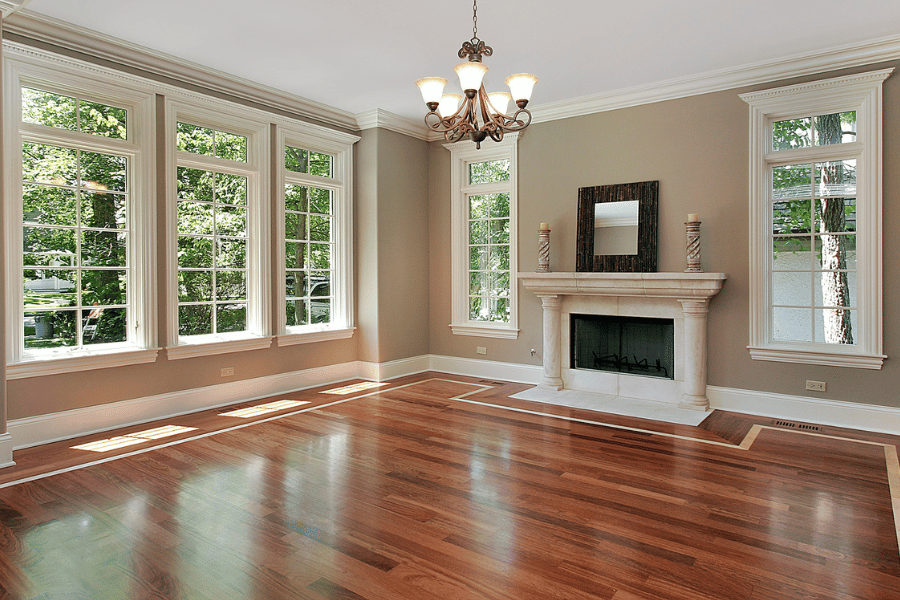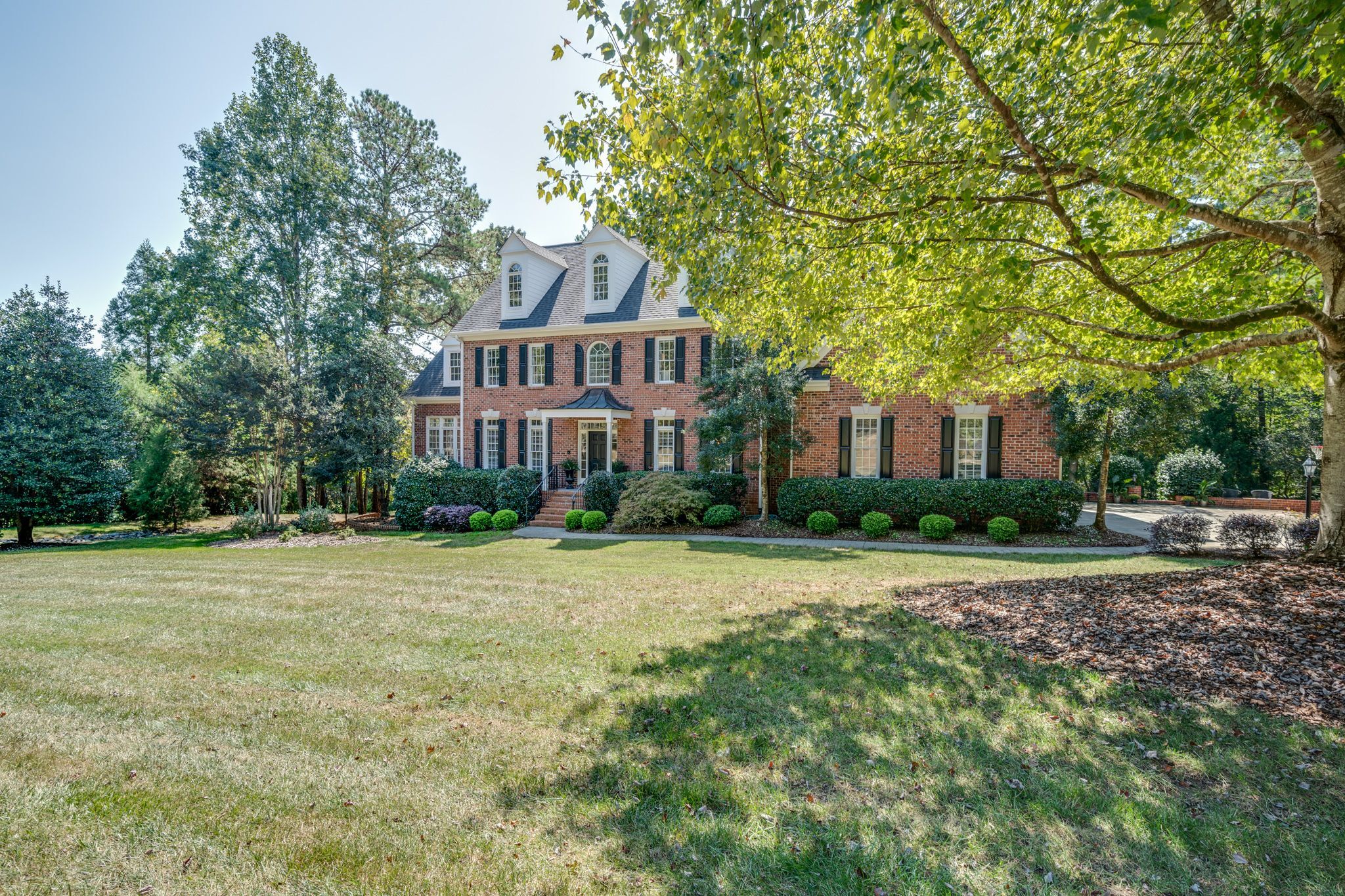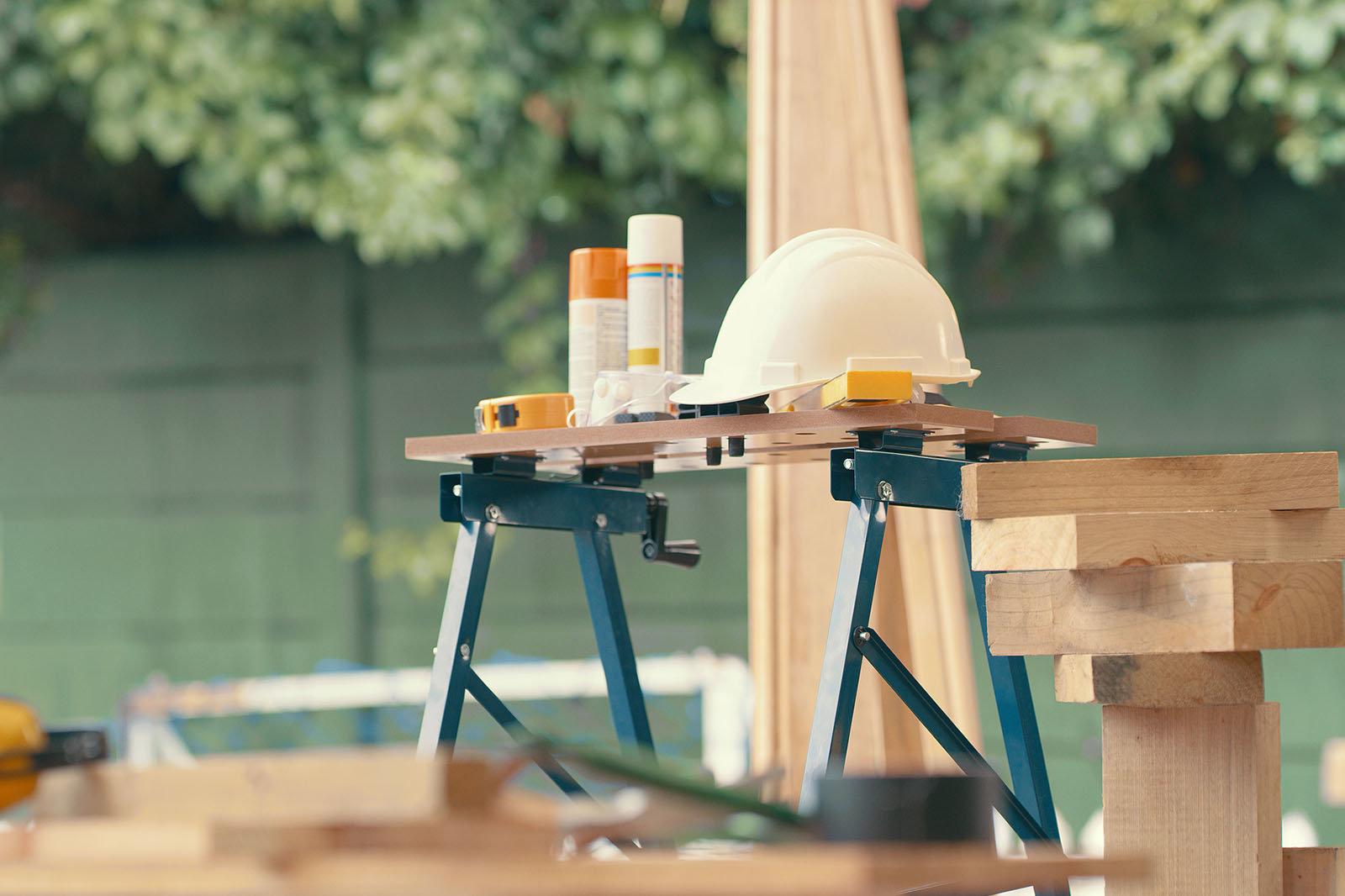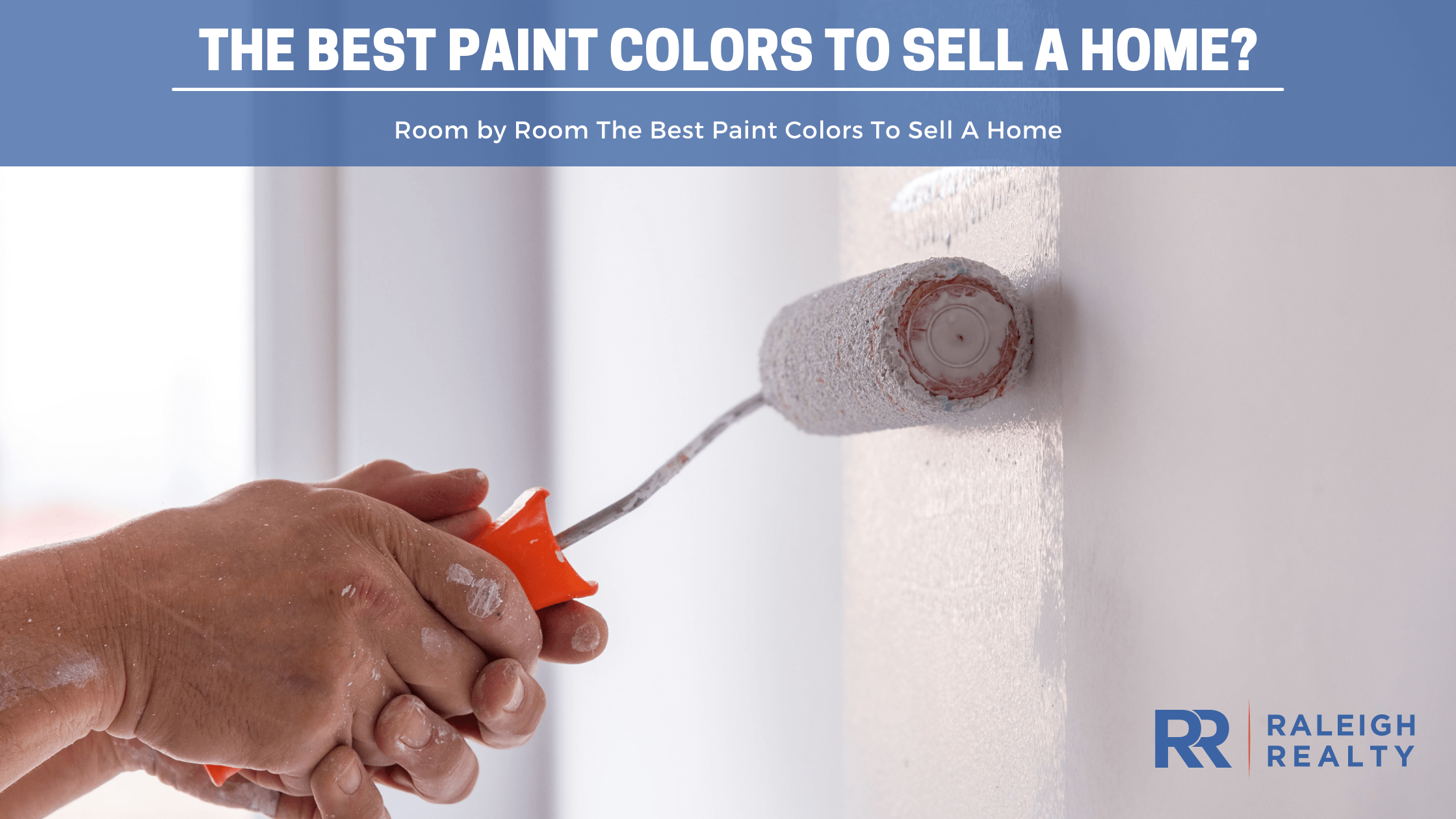DIY Home Project: 15 Tips for Painting Your Cabinets
January 04th, 2024
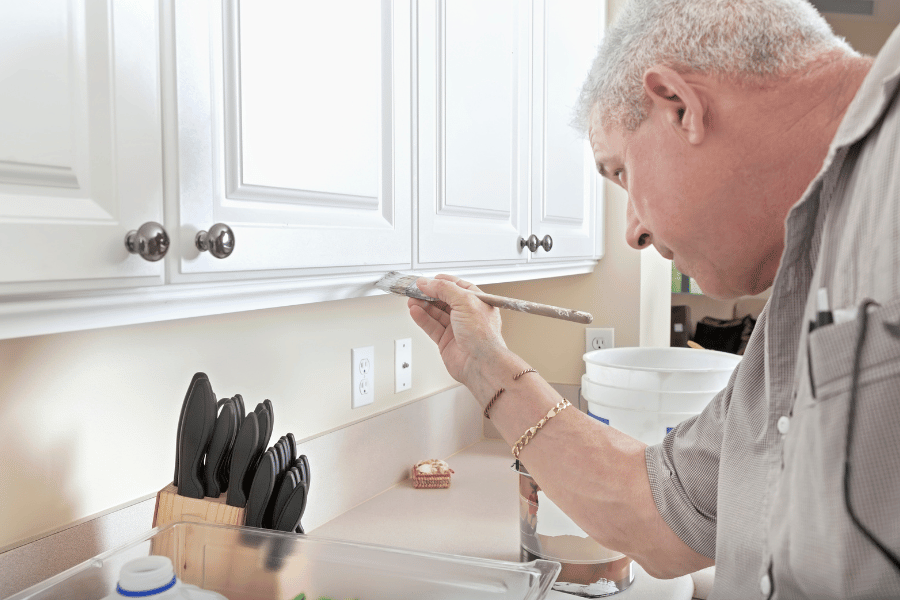
DIY Home Project: Tips for Painting Your Cabinets
Are you about to paint your cabinets and want to know some tips and tricks to make sure they look great? Keep reading to learn more about how to paint your cabinets and what to avoid.
If you are a project lover and love fixing up things, home makeovers are your favorite. With many current trends as well as changing trends, it can cost a lot to remodel your home through professionals and companies.
Cabinets often cover a large part of the walls, so painting them in different colors can dramatically change the whole look. If you like the cabinets in your home and they are in good shape, repainting is cost-effective and one of the best ways to revamp your home.
Painted cabinetry is a popular choice for homeowners as well as home buyers. While many people do hire a professional to paint their cabinets, there are many ways to do it yourself for a small price. Knowing how to DIY your own cabinets is a perfect way to upgrade your home's cost effect.
Here are the tips for painting your cabinets.
Chapters
1. Choose the Right Paint
To get a professional look, you need to make sure you get high-quality paint. It may cost more, but it will make it last longer, look better, and be more accessible than others. Oil-based paints are moisture and stain-resistant, which is a popular type for kitchens.
On the other hand, other water-based paints are durable and can last long. Latex is easier to work with and dries more quickly, so there are many different formulas to choose from that are all made for certain types of finishings, so make sure you find the perfect one for you.
2. Choose a Color that Complements
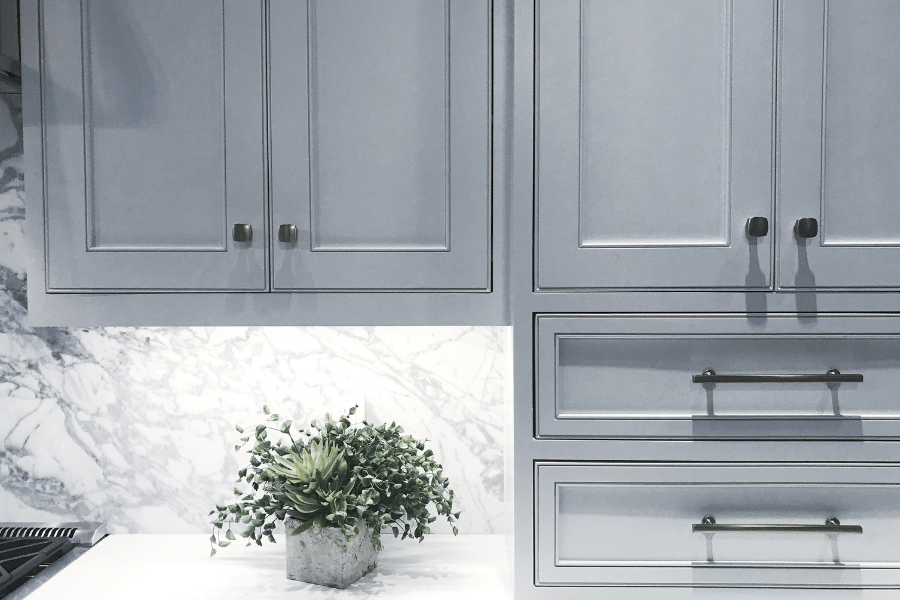
Color is one of the most important things when it comes to painting. The color you choose should complement your counters, floors, and other features and appliances throughout the room. White is one of the most popular colors because it brightens up any room.
On the other hand, other people tend to choose bold and brighter colors to add a pop of color. Dark cabinets like deep blues and greens look great in bigger kitchens. The size of the area does have a large impact on what color you should choose.
Keep in mind you want to find a color that will not tear or wear from water or sun exposure. Keeping your cabinets in the best quality for as long as you can is important, so finding the perfect color can help that.
3. Select the Right Finish
Cabinets are one of the most used furniture that will use a lot of handling every day and also has exposure to many things like water. Getting a durable and washable finish is one of the most important steps in painting your cabinets.
The best finish for kitchen cabinets is usually semi-gloss or high-gloss. High glosses are very durable, and when professionally used, they have a sleek look to them. However, it shows fingerprints and dirt more than others, so be aware of this.
A semi-gloss finish reflects light and will make the space look bigger without anything being very shiny. This is one of the most reliable and popular choices to use for painting cabinets.
4. Remove all Doors and Hardware
Before you get ready to paint, make sure that you remove all doors and hardware around the area and label them so you can correctly put them back on in the right place. If you forget to mark the doors and hardware, your cabinets will not go on correctly, so make sure you do not skip this step; just simply label each.
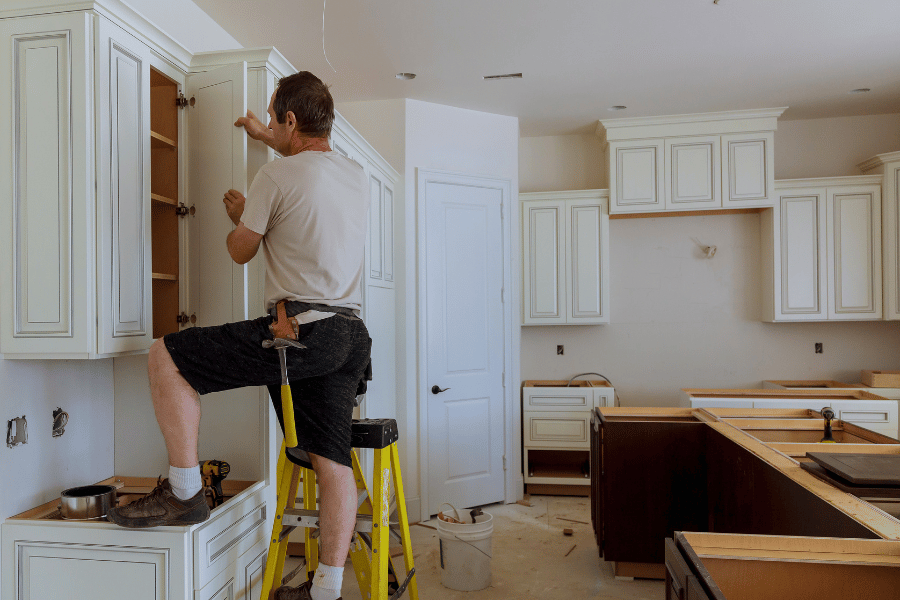
5. Clean Area Thoroughly
Cleaning the surface is important because it will remove all the oils and grease that could prevent a perfect finish. This is a crucial step that will ensure a successful and long-lasting paint job. Ensure you remember this simple step since it will significantly impact the finishing product.
6. Protect Countertops
Painting your cabinets can become messy, so the last thing you want to do is ruin your countertops in the process. The best way to protect your counters, backsplash, and floor is to cover them with builders' paper, rosin, or anything that will not have paint seep through.
This is a simple step that many people forget to do, and primer, paint, and even the finish can ruin your floors and counters, so taking the time to cover up the areas around is important and inexpensive.
7. Do Not Go Overboard on Sanding
Before painting anything, you should sand because it gives the new paint a good surface to grip on, but if it is brand-new wood, you do not need to sand anything down.
If your cabinets are factory-finished, you should sand lightly with 120-grit sandpaper or sponge. If the surface is patchy, you may need a coarser 100-grit paper to remove bumps. The 120-grit sander will get rid of any sanding marks and give your surface a great starting point, so do not forget this step and do not go overboard.
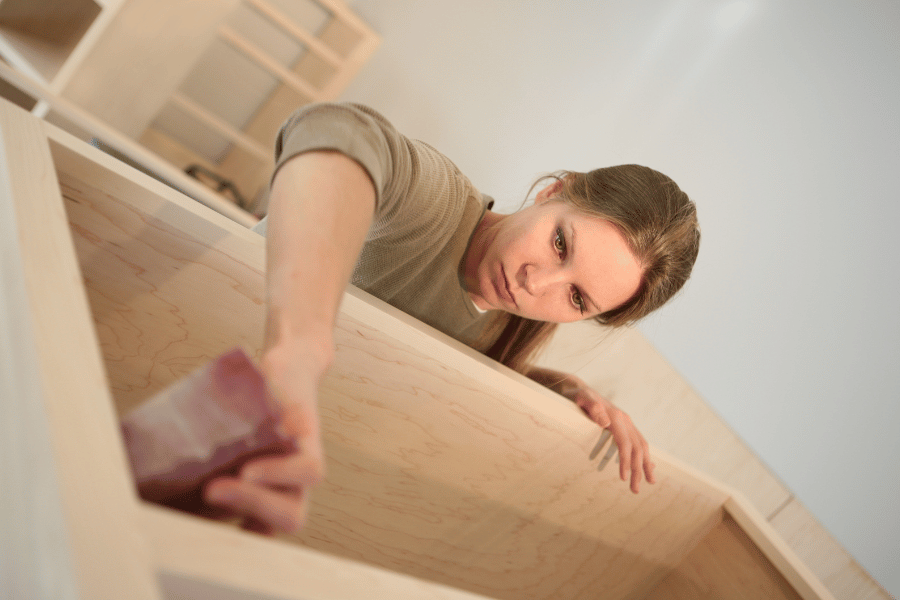
8. Prep Cabinets
Skipping preparation before painting will result in a bad paint job. If you are repainting, make sure you remove any previous paint or stain with a de-gloss so the new paint can stick properly.
If it is a thick finish, you may need to use a chemical stripper, but other than that, light sanding is all you need to do. Do not go overboard on sanding. You may need to do more to get a smooth finish if you have a heavy grain.
9. Prime
Priming is essential and helps prepare the surface for the top coats. Primer will also increase the paint's durability, so it will last longer. There are also tinted primers so you can match the color of your paint so it covers better. One coat of primer is usually good enough in most cases, so you do not need much.
10. Apply Light Coats
Many people think if they do thicker coats, it will speed up the process, but realistically, it won't. Applying thin layers is essential whether spraying, brushing, or rolling. Even coats will give you the best finish; applying too much will lead to runs and drips that will be very noticeable.
Two thin coats are usually the minimum recommended when painting. Some colors may need more to get the desired look, but make sure you leave time between coats for the paint to dry to get the best outcome.
11. Apply At Least Two Topcoats, Sand In Between
Apply at least two top coats of paint to ensure each coat is dry before starting the next coat. About one to two hours, and it will be ready to go. When doing the two coats, make sure the last final one is a thiner coat. On the other hand, some paints may look better with three coats, but in general, two should do the magic.
Dust can build up in the paint and primer as it starts to dry, so it is important for the smoothest end result to sand between the primer coats and paint with 220-frit sandpaper. Make sure you vacuum and clean up before recoating to avoid bumps and residue.
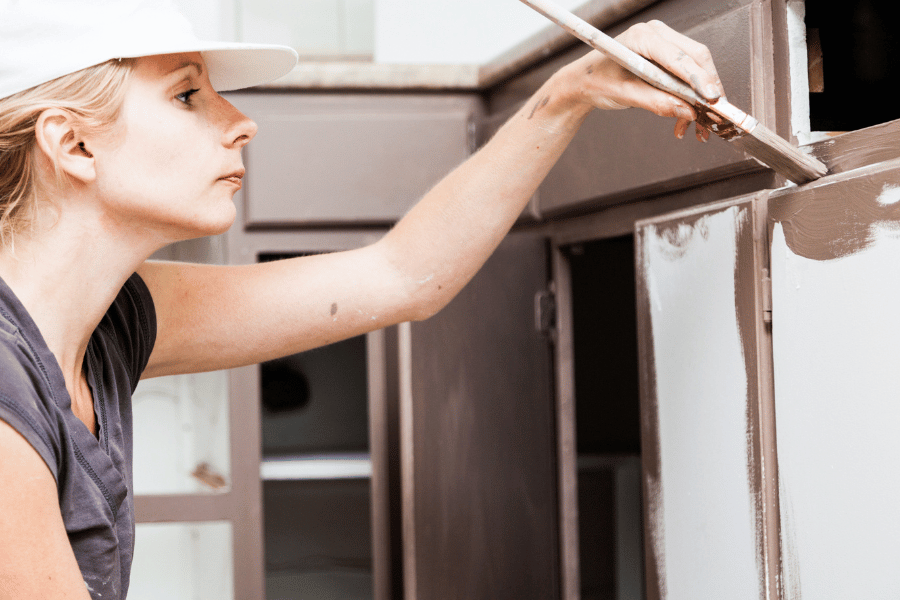
12. How Much Does it Cost?
Painting cabinets yourself is the most cost-effective way. A professional paint job can cost about $2,500, but doing it yourself can be as low as $200 in a small kitchen and up to about $775 for bigger areas. Whether you choose to do it yourself or get a professional, it is cheaper to repaint cabinets rather than replace them.
One gallon of paint will typically cover every 350 square feet of surface. One gallon typically covers a medium to large kitchen with over 20 cabinets. However, this does vary and depends on many things, like the color.
So, if you want new cabinets but want to avoid spending a couple of grand on replacing them, grab some paint and do it on your own. Such a simple, affordable job will make your cabinets look brand new.
13. Roll or Brush?
For cabinets, to get the best results, it has been recommended to use a brush, preferably a two to two-and-a-half-inch fine bristle brush. Sometimes, using a combination of a roller and brush may work.
Painting with a roller is a lot faster, but the texture of the roller on the cabinets makes it unsuitable for gloss paints. You can use a good quality mini roller to ensure everything is smooth to get the best finish.
Spraying cabinets will also leave a smooth, professional finish; however, swelling may be more difficult and leave more room for errors. So, if you are a beginner, stick to a good-quality brush to get the best outcome.
14. Paint Tools and Techniques
- Use a mini roller: A painter can do much with a brush. However, a roller will be a great alternative to cover the surfaces of the cabinet. You can find mini rollers at any home center or paint store.
- many paint rollers are available; each will leave a different finish, so make sure you find the sleeve that works best with the type of paint you are using.
- Follow the wood grain: If you are painting the frame or doors, following the wood grain with your brushstrokes is essential to get the best finish and look.
- Roll and then use the brush: Starting with a mini roller will speed up the painting process. Finishing with the brush will get in the wood grain corners, even out the coat, and remove the roller marks.
15. Cabinet Painting Materials Needed
Here is a small list of some painting materials you will need to paint your cabinets to help you get started.
- Painters tape
- Heavy-duty degreaser
- Wood filler
- Surface cleaner
- Sandpaper
- Multisurface primer
- Paint roller/brush
- Screwdriver
- Cloth/Sheeting
- Paint
- Primer
- Paint tray
Keep in mind that this is not all the supplies you need but a small list of common things so you can get a good idea of what goes into painting.
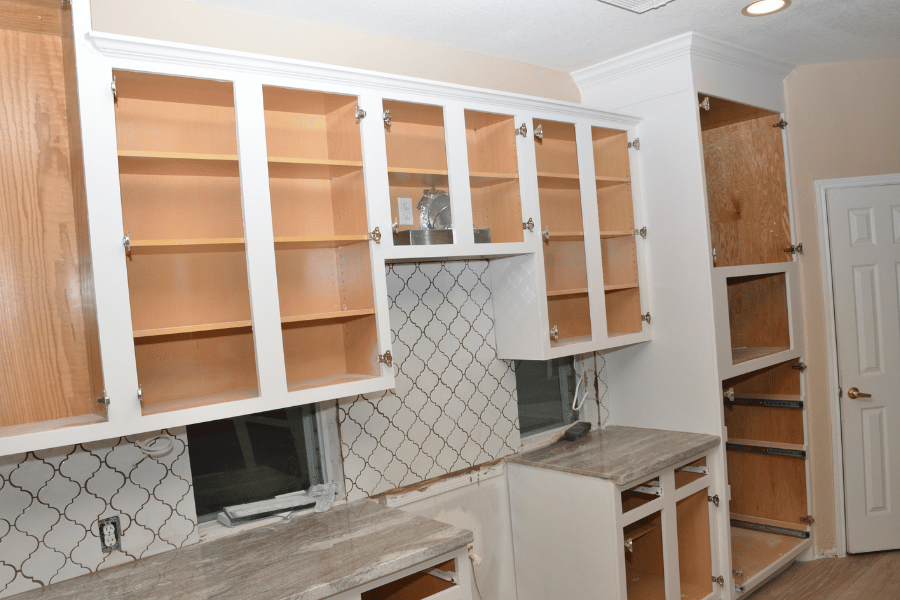
FAQS
What is the best tip to paint cabinets with?
Since the surfaces are smaller, sometimes spraying the borders of the cabinets and doors may be more accessible. However, this is a messier job and only something for someone who knows how to use a spray fan with paint.
How do you get the smoothest finish when painting cabinets?
If you do not have or want to use a sprayer to get a smooth finish, you should use a Lwo pile microfiber mini roller or a high-quality brush to get an even coat. Using a foam brush when down to check for any drips is a good idea, too.
What are some things to know before painting cabinets?
Some things to keep in mind before painting cabinets are: painting cabinets takes multiple days, keeping your expectations realistic, cleaning to get the best outcome, not forgetting to label everything, and avoiding cheap paint and products because it will make a huge difference.
What is the downside of painting cabinets?
Painting cabinets is the cheapest option, rather than staining and replacing them. However, painting will not work on any damaged cabinets, so if you have any scuffs or buffs, there may be better options than painting.
Tips for Painting Your Cabinets - The Bottom Line
Painting is a great way to revamp your home cost-effectively. Many people enjoy DIY projects, so painting your cabinets could be the perfect solution if you're looking for a budget-friendly home makeover. There's little to painting cabinets, but you should know a few simple things to avoid mistakes and achieve a beautiful finish.
Since cabinets take up a lot of space in your home, painting them correctly is essential because it can make a big difference. Painted cabinetry is a popular choice for homeowners and home buyers alike. While many people hire a professional, there are many ways to paint your cabinets for a small price. Learning how to DIY your own cabinets is a great way to upgrade your home's look without breaking the bank. Many helpful and free apps are available to assist you as a home buyer as well.
However, if you are interested in selling or buying a home, please contact us here or visit our website to connect you with one of our local agents at Raleigh Realty to help you.

Ryan Fitzgerald
Hi there! Nice to 'meet' you and thanks for visiting our Raleigh Real Estate Blog! My name is Ryan Fitzgerald, and I'm a REALTOR® in Raleigh-Durham, NC, the owner of Raleigh Realty. I work alongside some of the best Realtors in Raleigh. You can find more of my real estate content on Forbes, Wall Street Journal, U.S. News and more. Realtor Magazine named me a top 30 under 30 Realtor in the country (it was a long time ago haha). Any way, that's enough about me. I'd love to learn more about you if you'd like to connect with me on Facebook and Instagram or connect with our team at Raleigh Realty. Looking forward to connecting!
Related Blogs
